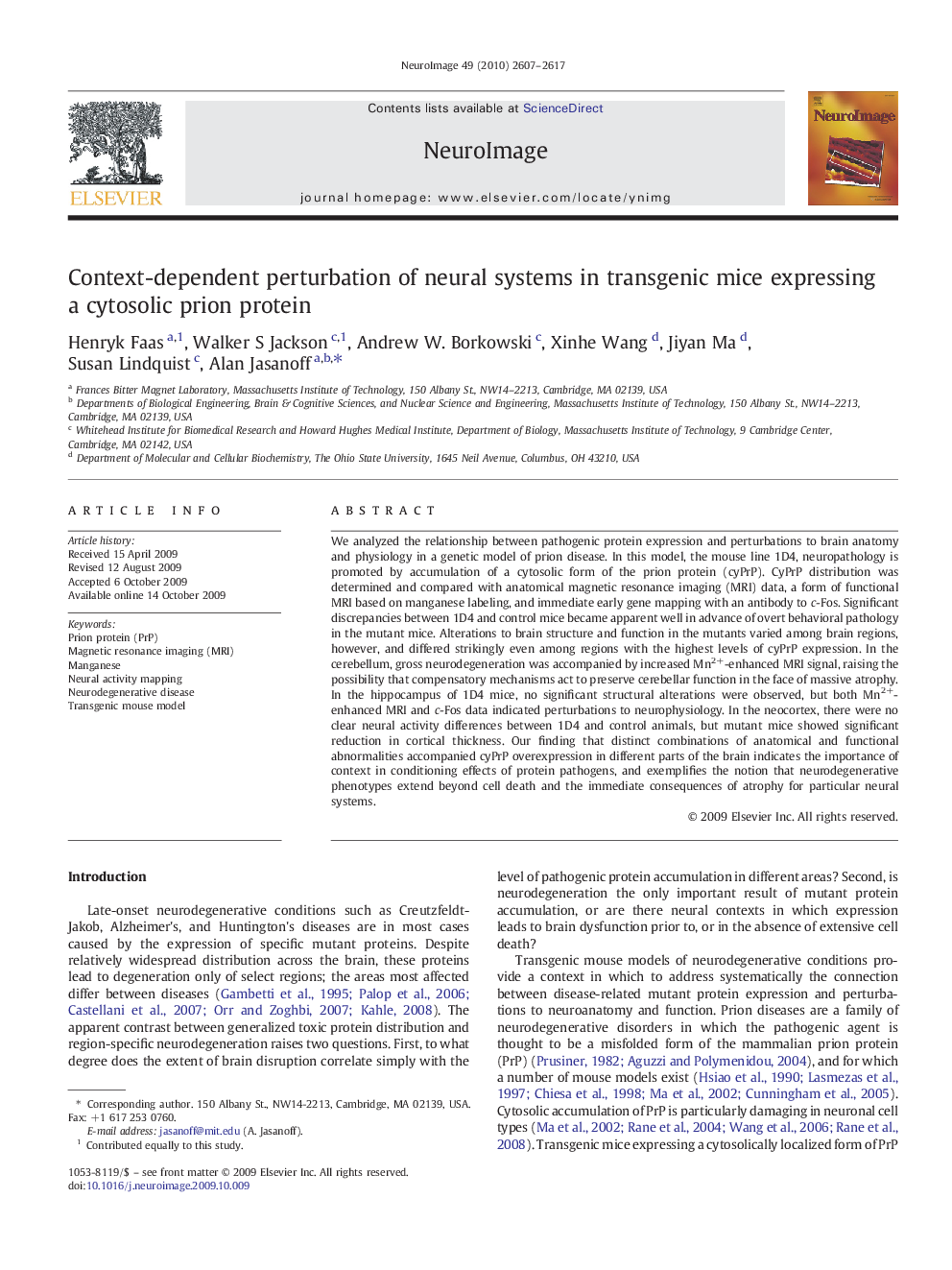| Article ID | Journal | Published Year | Pages | File Type |
|---|---|---|---|---|
| 6037120 | NeuroImage | 2010 | 11 Pages |
Abstract
We analyzed the relationship between pathogenic protein expression and perturbations to brain anatomy and physiology in a genetic model of prion disease. In this model, the mouse line 1D4, neuropathology is promoted by accumulation of a cytosolic form of the prion protein (cyPrP). CyPrP distribution was determined and compared with anatomical magnetic resonance imaging (MRI) data, a form of functional MRI based on manganese labeling, and immediate early gene mapping with an antibody to c-Fos. Significant discrepancies between 1D4 and control mice became apparent well in advance of overt behavioral pathology in the mutant mice. Alterations to brain structure and function in the mutants varied among brain regions, however, and differed strikingly even among regions with the highest levels of cyPrP expression. In the cerebellum, gross neurodegeneration was accompanied by increased Mn2+-enhanced MRI signal, raising the possibility that compensatory mechanisms act to preserve cerebellar function in the face of massive atrophy. In the hippocampus of 1D4 mice, no significant structural alterations were observed, but both Mn2+-enhanced MRI and c-Fos data indicated perturbations to neurophysiology. In the neocortex, there were no clear neural activity differences between 1D4 and control animals, but mutant mice showed significant reduction in cortical thickness. Our finding that distinct combinations of anatomical and functional abnormalities accompanied cyPrP overexpression in different parts of the brain indicates the importance of context in conditioning effects of protein pathogens, and exemplifies the notion that neurodegenerative phenotypes extend beyond cell death and the immediate consequences of atrophy for particular neural systems.
Keywords
Related Topics
Life Sciences
Neuroscience
Cognitive Neuroscience
Authors
Henryk Faas, Walker S Jackson, Andrew W. Borkowski, Xinhe Wang, Jiyan Ma, Susan Lindquist, Alan Jasanoff,
